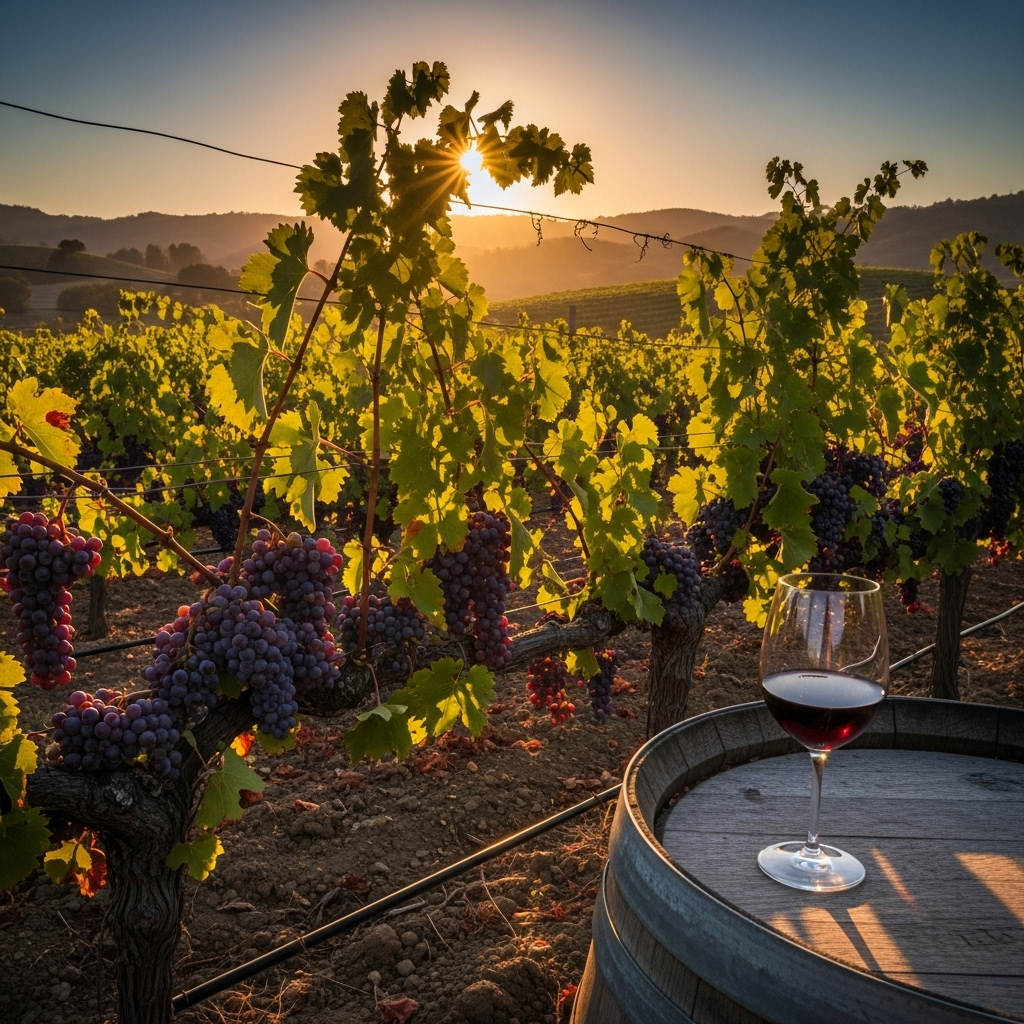
Warmer Nights Ripen California Vineyards
Share
Climate Change: The Catalyst for Warmer Nights
As climate change continues to reshape the landscape of California's vineyards, the phenomenon of warmer nights emerges as a pivotal factor in grape development. Traditionally, cooler nighttime temperatures have played a crucial role in preserving the acidity and balance of grapes, essential for crafting high-quality wines. However, the increasing frequency of warmer nights disrupts this delicate equilibrium. Grapes are ripening faster, often leading to higher sugar levels and lower acidity, which can alter the intended flavor profiles of wines. This shift not only challenges vintners to adapt their cultivation techniques but also invites a broader discussion about sustainability and the future of winemaking in California. As growers grapple with these changes, they are exploring innovative practices, such as adjusting irrigation schedules and selecting grape varieties more resilient to heat. The evolving climate presents both challenges and opportunities, underscoring the resilience of California's wine industry in the face of unprecedented environmental shifts.
The Impact on California's Grape Production
The shift in nighttime temperatures has profound implications for California's grape production, particularly in the state's renowned wine regions. Warmer nights promote a more consistent ripening process, allowing grapes to achieve optimal sugar levels and flavor profiles. This phenomenon enhances the potential for higher-quality wines, as vintners can cultivate grapes that are both ripe and balanced. However, this advantage is not without its challenges. Grapes that ripen too quickly can lead to imbalances in acidity, potentially compromising the complexity that many winemakers strive for. Additionally, the increased risk of pests and diseases thrives in warmer conditions, posing a threat to vineyard health. As growers adapt to these changing climates, they are also exploring new varietals that may be better suited to warmer conditions, thus reshaping the landscape of California's wine industry. The interplay between warmer nights and grape production underscores the need for innovative practices to ensure sustainability and quality in this vital sector.
Future of Winemaking in a Warming World
As climate change continues to reshape the landscape of California vineyards, the future of winemaking hinges on adaptation and innovation. Warmer nights, while initially seeming beneficial for grape ripening, present a complex challenge for vintners. The delicate balance of flavor development and acidity is at risk, requiring winemakers to rethink traditional practices. Some are exploring new grape varieties that thrive in warmer conditions, while others are adjusting vineyard management techniques to optimize water usage and canopy density.
Additionally, advancements in technology, such as precision viticulture, allow for more informed decisions regarding irrigation and harvesting times. The integration of sustainable practices, including organic farming and regenerative agriculture, is becoming increasingly vital. As the industry navigates these changes, the emphasis will not only be on producing high-quality wines but also on ensuring the long-term health of the ecosystems that support them. Ultimately, the resilience of California's winemaking community will be tested, yet it may also lead to a renaissance of creativity and diversity in the wines of tomorrow.
